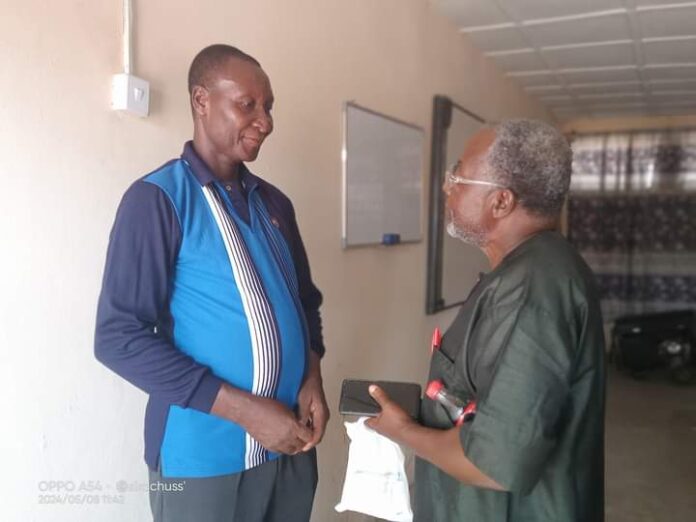By Denen Achussah
Famous journalist cum Benue State University (BSU) Makurdi teacher, Michael Vershima Atovigba, PhD, on Wednesday, 8th May, 2024, at the university’s Science and Mathematics Education Laboratory, demonstrated his findings for the determination of all odd composites up to a natural number, N. The work is titled: Odd Composites Algorithm and the K-C Prime Number Equation: An Equation of Total Count of Primes under or up to a Natural Number, N.
Dr. Atovigba is famous for his works on Riemann Hypothesis, which was listed in 2001 by the Clay Mathematics Institute, New Jersey, as one of the seven millennium problems, George Akume Precision Equation, a second degree polynomial precision equation useful in economic theory in terms of budgeting and efficient allocation of resources, use of geometry to prove the probability theorem, which stopped the global campaign by America’s Prof. Gabriel Oyibo, to expunge probability from the world university curriculum.
Concerned that prime counting functions are approximations rather than precise algorithms that lead to precise counts of total number of primes up to a natural number, Dr. Atovigba says he devoted 15 years, “to search out for more algorithms that might provide with greater precision the total number of primes up to a given natural number.”
His focus therefore, was to establish “a prime number equation which provides total count of primes up to or under a given natural number,” the breakthrough he demonstrated today. The results of his “study have sequence of odd numbers leading to the sequence of odd composites divisible by one or more primes thus further leading to removal of all odd composites divisible by the primes under or up to a natural number, which leaves total number of primes under or up to that natural number.”
Dr. Atovigba’s Theorem, known as Odd Composites Algorithm states that
C = Sum of (P1) – Sum of (P1,P2) + Sum of (P1,P2,P3) – …
Where
C means algorithm of odd composites
(P1) Means cardinality or count of odd composites divisible by P1 under N (given natural number)
(P1,P2) Means cardinality of odd composites divisible by both P1 and P2
(P1,P2,P3) Means cardinality of odd composites divisible by P1,P2,P3 etc. provided that the product (P1P2P3) etc is less than or equal to N.
In arriving at the equation, Don Atovigba made use of the inclusion-exclusion principle as a method of his study. “The study retains the original prime number equation Eta=K-C (Atovigba, 2014), where K is total number of odd numbers and C, algorithm of odd composites up to a natural number.
His conclusion is that the study has successfully come up with the algorithm for total count of odd composites up to a Natural Number, N, with a computer programme, set for an automation of total count of odd composites, hence total number of primes up to a natural number, using Eta= K-C.
Dr. Atovigba, therefore, recommends that the odd composites algorithm of this study along with the prime number equation should be accepted as platonic objects in number theory, and adopted by schools and universities globally.
“By Platonic object it is meant, the object has all along being in existence and can only be discovered,” he concludes.
Prior to the breakthrough, Dr. Atovigba, in 2014, proposed the prime number equation (Eta= K-C), to the effect that the total number of primes under or up to a natural number is the difference between count of odd numbers and count of odd composites.
Professor Iormem Kyereve, who chaired the session described it as interesting, especially that primes are useful for rhe determination of the “power of computers.”
While congratulating Dr. Atovigba on the record, Prof Omenka Jerry, Head, Department of Science and Mathematics Education said the work is significant to the advancement of numerical analysis and number theory.
In his words of encouragement, Dr. Alfred Tyav of the Department of Industrial Technology, noted that great men (like Dr. Atovigba) may not be recognised when alive but when they are no more, they are honoured through their works because they have their names written in books of history.
For details of the work, contact Dr. Michael Vershima Atovigba: mikeatovigba@gmail.com. matovigba@bsum.org.edu



